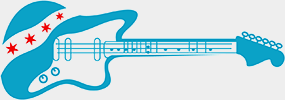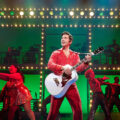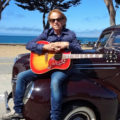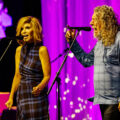The Byrds’ Roger McGuinn flies towards North Shore Center for “Songs And Stories” homecoming
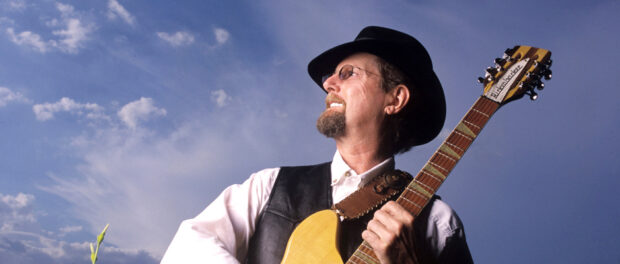 Photo provided by John Chiasson
Photo provided by John Chiasson
When The Byrds combined the British Invasion sounds of The Beatles and the folk stylings of Bob Dylan throughout the 1960s, it was downright revolutionary, though the legends followed it up by opening the door to the entire psychedelic era and then practically invented the country rock movement.
Distinctive singer/songwriter/guitarist Roger McGuinn was a pivotal presence throughout it all, who alongside David Crosby, Chris Hillman, Gene Clark and Michael Clarke, was rightfully inducted into one of the earliest Rock and Roll Hall of Fame classes.
He may now be 82-years-old, but the local native behind “Mr. Tambourine Man,” “Turn! Turn! Turn!,” “Eight Miles High” and “So You Want To Be A Rock ‘N’ Roll Star” has that many more “Songs And Stories” to share, which as he tells Chicago Concert Reviews, will be the focus of an autobiographical homecoming at the North Shore Center For Performing Arts in Skokie on Wednesday, September 25.
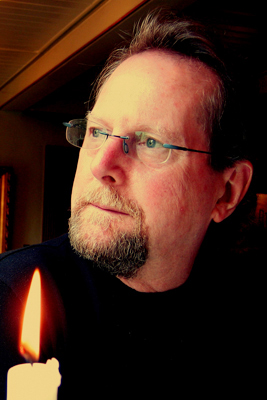 What exactly do you have planned for the North Shore Center?
What exactly do you have planned for the North Shore Center?
Roger McGuinn: I do a one man play. It’s scripted and rehearsed, like a Broadway play, but it’s just me. It’s like doing “The Life Of Will Rogers,” except it’s not about Will Rogers…It’s acoustic and electric. I have a Rickenbacker 12-string, a 7-string Martin that I came up with the idea for, a 12-string Martin and a 5-string banjo.
Have you considered turning this concept into a Broadway musical?
McGuinn: Broadway’s a lot of work. I like what I do. I go on the road. I work nice theaters every couple of days. I don’t have to work eight shows a week. From what I’ve seen, it’s really a health hazard to work that hard.
Can you recall any previous performances in the area from any portion of your career?
McGuinn: I’ve played in Schaumburg, somewhere around there. You could find my tour dates on my website. I go back to 1981. Back in ’81, I got a computer and it was before people were online and everything, so to figure out something to do with it, I started cataloguing my tour dates. If you go to McGuinn.com and you click on the site map, not the [current] tour dates, and then you click on “information,” it says “McGuinn Tour Dates” and it goes back to 1981. The first one was in Las Vegas on May 16 of 1981.
This is a homecoming show of sorts. Tell us a bit about growing up in Chicago.
McGuinn: Yeah it is, except that, well, I was born there and I lived there until I was six-years-old and then my folks, [Jim and Dorothy McGuinn], wrote a best seller called “Parents Can’t Win,” which was a satire on Dr. Spock. We went on a book tour and ended up living in St. Augustine, Florida for a year or so. Then we couldn’t go back to Chicago cause my parents’ friends had thrown such a good farewell party, they were embarrassed, so we moved up to New York and lived up in Tarrytown for a couple of years. And finally, when the coast was clear, we moved back to Chicago. I guess I was about 12 by the that time, so from one to six and 12 to 17, I lived in Chicago.
 What do you recall about attending the Old Town School Of Folk Music as a student?
What do you recall about attending the Old Town School Of Folk Music as a student?
McGuinn: It was great. It was just a brand new thing. I started when it opened in 1957. It was at 333 North Avenue, an old bank building that they’d taken over, and it had three classes: beginning, intermediate and advanced. I taught myself how to play a little guitar when I enrolled, so I went to the intermediate class, eventually went up to the advanced class and it was great. Frank Hamilton was the banjo and guitar teacher, and he just taught me everything I know. He taught me how to play the 5-string banjo, and the 12-string guitar and the stuff I ended up using in The Byrds.
Can you flashback to when The Byrds were beginning to take off?
McGuinn: Oh, it was very exciting. No, it was sort of a slow take off because we recorded “Mr. Tamborine Man” in January of 1965 and it wasn’t released for several months and we thought, “hmm, I’m not sure they’re ever going to release that.” Dino Valenti, from San Francisco, and I were going to start another group. We would wear space helmets and wireless microphones. Being a science fiction fan, that appealed to me, but fortunately I didn’t. I stayed with The Byrds and Columbia Records finally released the song. It got up to number one somewhere in June.
What qualities made The Byrds stand out from all the other acts at the time?
McGuinn: There were a couple of things. [Producer] Jim Dickson had some experience in Hollywood. He was married to [actress] Diane Varsi and he made all The Byrds read “An Act To Prepare Us” so that we were doing method acting in our singing, and also, he said “record quality material. Don’t just go for the hits. Record something that’s going to have enduring quality” and we did concentrate on that. That’s why you have Pete Seeger’s “Turn! Turn! Turn!,” and “The Bells of Rhymney” and a lot of songs of really good quality. We weren’t going for bubblegum stuff.
What are you most proud of from that period as you were finding your footing?
McGuinn: I wouldn’t say “proud of,” but the thing that we did was we combined The Beatles and Bob Dylan. Bob hadn’t decided to go electric at that point, but we influenced him to do that, so that’s kind of a good accomplishment.
Are there any aspects of the hippie culture The Byrds might have helped start?
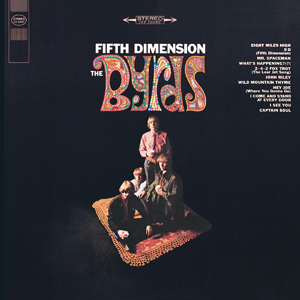 McGuinn: We probably did help to start it because we recorded “Eight Miles High,” which was influenced by John Coltrane and the audience couldn’t conceive that it was jazz rock. They kind of thought it was psychedelic, so I guess that was a contribution to the hippie movement. We were not really hippies. We came from the Beat Generation. We were just a little before hippies.
McGuinn: We probably did help to start it because we recorded “Eight Miles High,” which was influenced by John Coltrane and the audience couldn’t conceive that it was jazz rock. They kind of thought it was psychedelic, so I guess that was a contribution to the hippie movement. We were not really hippies. We came from the Beat Generation. We were just a little before hippies.
The Byrds are often referred to as a supergroup. Did it feel that way back then or was that a description that came later?
McGuinn: I don’t think the initial Byrds were a supergroup because we had Michael Clarke, who just played conga drums on the street. We had Chris Hillman, who just played in bluegrass bands. David Crosby had been with Les Baxter’s Balladeers and Gene Clark had been with The New Christy Minstrels, so we weren’t really a super group like Crosby, Stills & Nash were a supergroup because they all came from successful bands. We were just kids off the street that played, except that I had some good [experience] working with Bobby Darin, and Judy Collins and being a session musician in New York. I played with Paul Simon. I was the musical director on Judy Collins’ third album for Elektra.
Did they give you any lessons or words of wisdom?
McGuinn: Not really. It just helped me with my studio chops. I was able to go into the studio and record easily. I remember one time I was working with Judy Collins. I was giving Judy a lot of suggestions. “You know, I think a cello would sound good on this song” and she said “yeah.” We tried it and the bass player kind of got grumpy with me. “Well, it’s not a studio’s musician job. We should be subservient” (laughs).
It sounds like it was a good call (laughs).
McGuinn: It worked, so it gave me arranging skills, as well as learning to play in the studio.
How would you describe The Byrds’ evolution over the years?
McGuinn: The Byrds started out as folk rock and we gradually got into what people call “psychedelic.” It was really a jazz-oriented thing cause we were fans of Miles Davis and John Coltrane. Then we did something about as far from psychedelic as you can get. We went to country rock and we went to Nashville for “Sweetheart Of The Rodeo,” so we’re just trying to hop from one genre to another in order to not get locked in a box.
Just prior to this current tour, you reunited with Chris Hillman and collaborated with Marty Stuart for the 50th anniversary of the “Sweetheart Of The Rodeo” album. What additional perspective did that bring to the material?
 McGuinn: It was great fun working with Marty and Chris again…I’ve worked with Marty quite a few times prior to that. The idea came to us [when] my wife and I were down in South America. We were in Buenos Aries. Chris Hillman had just done an album. It was by Tom Petty. He was the music producer of it. So Tom had passed away, and Chris Hillman’s house had burned down, and we thought, “we need to do something for Chris.” So I called up Marty and asked if he’d be interested in doing that. He said “yeah,” and then we got in contact with Chris and put the whole thing together. We scripted it so we could kind of tell the audience how The Byrds got into country music and show ‘em that we were into it a little bit before “The Rodeo.” That wasn’t the first time we did it.
McGuinn: It was great fun working with Marty and Chris again…I’ve worked with Marty quite a few times prior to that. The idea came to us [when] my wife and I were down in South America. We were in Buenos Aries. Chris Hillman had just done an album. It was by Tom Petty. He was the music producer of it. So Tom had passed away, and Chris Hillman’s house had burned down, and we thought, “we need to do something for Chris.” So I called up Marty and asked if he’d be interested in doing that. He said “yeah,” and then we got in contact with Chris and put the whole thing together. We scripted it so we could kind of tell the audience how The Byrds got into country music and show ‘em that we were into it a little bit before “The Rodeo.” That wasn’t the first time we did it.
Chris released his book, “Time Between,” shortly thereafter. Did you have a chance to read it?
McGuinn: Yeah I read it and I thought it was a great memoir. It was really good.
You’ve previously mentioned not wanting to write a book. Is there any update on that or are you going to keep doing so in song?
McGuinn: I think my “Stories, Songs & Friends” CD/DVD combination is my autobiography.
And that’s similar to this current show, correct?
McGuinn: Yes it is. I’ve been doing this show for a long time. It started out back in, I guess it was in the ‘80s. I was opening up for John Prine in Texas and the reviews came out the next day. Of course John Prine was a marvelous storyteller and I didn’t talk between songs, because the way I came up, it wasn’t cool. It’s like Elvis [Presley] would say, “thank you very much” and that would be it. So the review of the show came out the next day and it said, “unless you’re a great fan of Roger McGuinn’s, he’s pretty boring cause he didn’t say anything.” I went, “that’s a valid criticism,” so my wife and I started cooking up some stories to tell between the songs and it’s evolved into this one man play that I’ll be doing.
What was it like when you first left the group and went solo?
McGuinn: I still had some records to do for Columbia Records under The Byrds’ contract, but they changed it to a solo contract, so I went into the studio and basically just did anything that came to mind. That’s why there are not a lot of hit records out of that, but I had a lot of fun doing it. A lot of people liked the first solo album. It’s just called “Roger McGuinn” on Columbia Records. In fact, Elvis Costello re-published it sometime in the ‘80s or ‘90s I think. He got the license for it and put it out under another label.
Out of your countless projects, are they any you’d say are the most quintessential?
 McGuinn: I think “The Notorious Byrd Brothers” might have been one of the best Byrds albums, and then of course, a lot of people do like the “Sweetheart Of The Rodeo,” although it was a shock to the rock audience when it came out cause it was country. But I’d say “Notorious” was one of the good ones, and then in my solo career, “Back From Rio” with Tom Petty and a lot of The Heartbreakers on it, and Elvis Costello. [We] had a really great time in the studio with that and I got a hit single. It was number two called “King Of The Hill” that Tom and I had written.
McGuinn: I think “The Notorious Byrd Brothers” might have been one of the best Byrds albums, and then of course, a lot of people do like the “Sweetheart Of The Rodeo,” although it was a shock to the rock audience when it came out cause it was country. But I’d say “Notorious” was one of the good ones, and then in my solo career, “Back From Rio” with Tom Petty and a lot of The Heartbreakers on it, and Elvis Costello. [We] had a really great time in the studio with that and I got a hit single. It was number two called “King Of The Hill” that Tom and I had written.
What did working with him add to that project and how did it help you reach yet another new generation throughout the 1980s?
McGuinn: Yeah, I think Tom was a great help to me in that situation. I had just been on tour with him with Bob Dylan on the “Temples In Flames” Tour and we played all over Europe. It was about a two month tour of Europe and we wrote “King Of The Hill” on that tour. Tom and I were great friends. I’ve known him since The Heartbreakers came out in 1976. I took him to New York and we played the Bottom Line together.
Once the 1990s started, The Byrds were one of the early inductees into the Rock and Roll Hall of Fame. What do you remember about that night, which I believe was the last night you all performed together?
McGuinn: Yeah, it was the last time I saw two of The Byrds too. I didn’t see Gene Clark or Michael Clarke after that. But of course David Crosby, Chris Hillman and I went out as The Byrds later in the ‘80s to preserve the trademark of the name, but it was a kind of a bittersweet thing seeing the original Byrds. It was a great honor to be inducted into the Rock and Roll Hall of Fame and it was nice to see the guys again.
Shortly thereafter, you started up the “Folk Den” section of your website and then compiled “The Folk Den Project” box set. What drew you to the online concept so early in the game?
McGuinn: [The Monkees’] Michael Nesmith had learned how to record songs and put them up on the internet. I saw him do that and that gave me the inspiration, but the first Pro Tools album was one that I worked on with [producer] Terry Melcher. It was a Beach Boys album called “Summer In Paradise” and it was recorded entirely on Pro Tools, which was a beta copy of Pro Tools. It was brand new software and we recorded it with a Macintosh Quadra with twelve gigabytes of optical ram. It was really new back then. I flew out to Carmel. I was at Terry Melcher’s house and I expected we were going to go down the hill to the studio any minute. Instead, we walked to another room where his engineer had Pro Tools set up and we recorded a Beach Boys album that way. Now it wasn’t very well received, but it was the first Pro Tools album, so I knew how to do that.
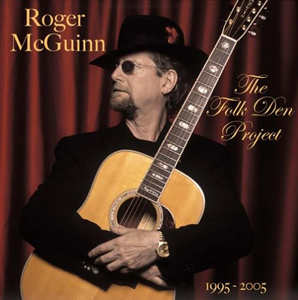 So when I got home, [I thought to myself] I love folk music, I grew up with it and I wanted to preserve it. I realized that the new folk singers, like Joni Mitchell and Bob Dylan, were not doing traditional material. They were writing their own songs, which were great, but what would happen [to] the cowboys songs, the blues, the old sea shanties and the prison songs? They just disappear, so I thought I’d do something about it. Knowing how to record at home and putting it up on the internet, I started the “Folk Den” in 1995 as a public service with a downloadable version of it for free: the chorus, the lyrics and a little story about the song. I’ve been doing that since November of 1995 and I don’t think I’ve missed a month. Every month I’ve put one out.
So when I got home, [I thought to myself] I love folk music, I grew up with it and I wanted to preserve it. I realized that the new folk singers, like Joni Mitchell and Bob Dylan, were not doing traditional material. They were writing their own songs, which were great, but what would happen [to] the cowboys songs, the blues, the old sea shanties and the prison songs? They just disappear, so I thought I’d do something about it. Knowing how to record at home and putting it up on the internet, I started the “Folk Den” in 1995 as a public service with a downloadable version of it for free: the chorus, the lyrics and a little story about the song. I’ve been doing that since November of 1995 and I don’t think I’ve missed a month. Every month I’ve put one out.
You were so ahead of the curve. That’s seriously a book in and of itself.
McGuinn: It’s been a lot of fun. Once I realized you could record on a computer, I went “this is great” and that’s what “Treasures From The Folk Den” was. I took a computer up to the homes of Pete Seeger, and Joan Baez and Judy Collins. I walked into Pete Seeger’s house in Beacon, New York and his wife Toshi saw the computer. She said, “you’ve got a million dollar recording studio in a box” and it was true.
How do you feel about the state of the music industry at the moment and where it wound up in the online ecosystem?
McGuinn: We’re selling a lot of streaming audio now more than records, so it’s come around. Back when the Napster thing first happened, it was a shock to the recording industry and they all protested it, but I remember this guy, Cory Doctorow, he’d go around to do lectures to the recording industry and say, “you guys, [I’ve] gotta drag you kicking and screaming to the money tree. You can make so much more money if you stream the stuff. There’s no physical product to print.”
At the same time, many of your records have been re-issued as part of the vinyl resurgence. Any thoughts?
McGuinn: It’s cool. It’s kind of a nostalgia trip. It’s like transistor radios or something. I don’t think it sounds a whole lot better, especially if the content was from a digital source on vinyl. You’re not going to sound better than the digital source, but anyway, I think I liken it to a novelty and sort of a nostalgic trip.
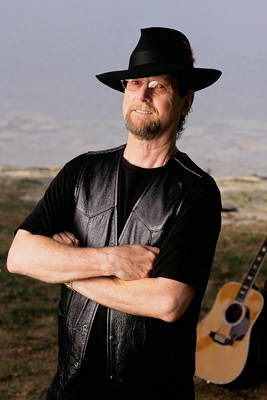 Do you have a playlist going or anyone you’re following right now?
Do you have a playlist going or anyone you’re following right now?
McGuinn: I’m almost embarrassed to say “no”…I like classical and jazz. I’m not really into Taylor Swift and all that (laughs).
Out of the many who followed in your footsteps, who are a few you feel are the strongest?
McGuinn: I remember that Tom Petty sounded like me when I first heard him (laughs), and then I get information about different groups, like The Smiths and so on, that had the jingle-jangle sound, but I haven’t really payed close attention to it.
You’ve also performed with pretty much everyone imaginable. Do any of those all-star shows really stick out for you?
McGuinn: I think you can find this on YouTube. “My Back Pages” with Tom Petty, Bob Dylan, Neil Young, George Harrison and Eric Clapton [from Dylan’s “The 30th Anniversary Concert Celebration”]. That was a great moment.
What’s the vibe like when a group of that caliber is sitting in the back ready to go out on stage together?
McGuinn: We all know each other, and it’s friendly and it’s like a great band. You just feel, “wow, this is really happening! This is fun!” I just worked with Eric recently. He did a guitar legends thing in L.A.
Is there anyone left you’d like to work with that you haven’t already?
McGuinn: No, I can’t think of any. I like being solo. I love the solo tour.
How do you hope listeners will ultimately remember you?
McGuinn: Gee, I don’t know. Maybe somebody who loved folk music, and wanted to experiment with it, and put a rock and roll beat to it.
Mission accomplished.
McGuinn: Alright!
Roger McGuinn performs at the North Shore Center For Performing Arts on Wednesday, September 25. For additional details, visit McGuinn.com and NorthShoreCenter.org.
